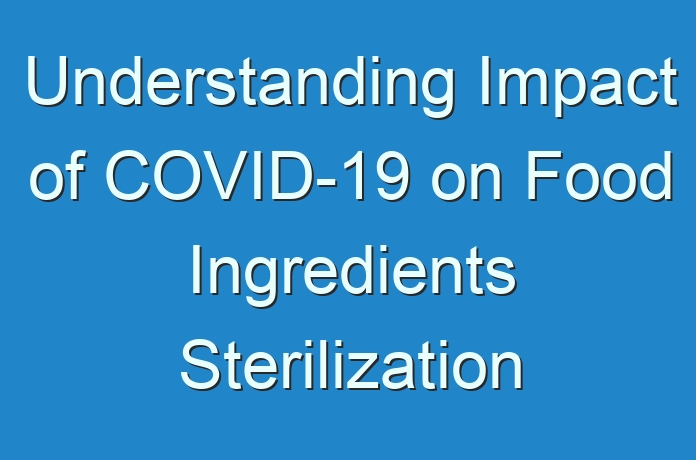
Cutting-edge Systems Help to Eliminate Bacterial Load of Low-moisture Powders
The highly competitive F&B industry has created a demand for safer and tastier products. Due to this, food ingredients sterilization is playing a key role in helping manufacturers preserve food for a prolonged period and kill microorganisms to drive out moisture from ingredients. Cutting-edge technologies are transforming the food ingredients sterilization market, which is expected to reach a revenue of ~US$ 554 Mn by 2029 from a value of ~US$ 367 Mn in 2019. For instance, French engineering consultant the ETIA Group has patented the Spirajoule technology to eliminate the bacterial load of bulk solids and low-moisture powders.
Companies in the food ingredients sterilization market are increasing research in electrically heated auger conveyors to sterilize ingredients such as herbs, nuts, and grains, among others. They are developing systems that help workers to easily control humidity, temperature, and moisture in a wide variety of foods. Novel steam processes in these systems prevent condensation of sticky powders that can be treated without agglomerating.
Request Brochure:
https://www.transparencymarketresearch.com/sample/sample.php?flag=B&rep_id=19133
Companies Focus on Steam Sterilization for Natural Treatment of Dried Materials
There is a growing demand for pasteurization and sterilization of dry natural ingredients to help manufacturers comply with product safety standards. Several solutions such as irradiation, ozone, and UV are creating incremental opportunities for producers in the food ingredients sterilization market. Among these techniques, steam sterilization is acquiring prominence as a globally recognized solution for food ingredients sterilization. For instance, the WOLFF Group— a provider of technologies and equipment for various end markets, has adopted SAFESTERIL®, a continuous system sterilization process that conducts safe and natural treatment of sensitive raw materials.
Manufacturers in the food ingredients sterilization market are increasing their efficacy in steam sterilization procedures that do not impact the flavor, color, or moisture in ingredients. Food ingredients sterilization is being highly publicized in the F&B landscape, since the demand for high quality and safe products is gaining momentum. Safe sterilization of spices or dried materials has promising potential for micro-reduction.
More Trending Reports by TMR:
Vacuum-Steam-Vacuum Technology Overcomes Limitations of Traditional Sterilization for Heat Sensitive Powders
Preventing contamination of food and nutritional powders from microorganisms is an issue that has not been entirely dealt with by all manufacturers in the food ingredients sterilization market. This explains a modest ~4% CAGR of the food ingredients sterilization market. Hence, producers are developing innovative treatment solutions for decontamination of powder processing in bulk material manufacturing facilities. For instance, powder handling and process containment equipment provider DEC Group has collaborated with the ETH Zürich University and other industrial partners to decontaminate heat sensitive powders using the Vacuum-Steam-Vacuum (VSV) technology.
REQUEST FOR COVID19 IMPACT ANALYSIS:
https://www.transparencymarketresearch.com/sample/sample.php?flag=covid19&rep_id=19133
Heat-sensitive powders are being increasingly treated with steam and vacuum in the market for food ingredients sterilization. Companies in the food ingredients sterilization market are strengthening their distribution chains by offering to supply complete process lines, right from handling contaminated materials to final packing under controlled atmosphere. They are acquiring comprehensive knowledge about how to avoid contamination during powder processing due to the growing demand for food ingredients with extended shelf life and greater diversity.
Hybrid Steam-microwave Sterilization Effectively Halts Reaction of Lipase Enzyme in Palm Oil Fruits
Hybrid steam-microwave sterilization is one of the innovative concepts that acts as a key driver for the food ingredients sterilization market. This sterilization technique is being extensively used to treat palm oil fruits at atmospheric temperature.
Conventional sterilization in palm oil mills inactivates the generation of lipase enzyme and breaks the oil-bearing cells for easier oil extraction. However, the use of pressured vessels leads to issues of frequent production interruptions due to irregular inspection of the vessels. This phenomena directly affects production efficiencies at manufacturing facilities. Hence, companies in the food ingredients sterilization market are introducing microwave irradiation technology to efficiently halt the reaction of lipase enzyme that leads to the generation of free fatty acids. Innovative atmospheric-pressured hybrid steam-microwave method is gaining popularity for effective sterilization of palm oil fruits in the market for food ingredients sterilization.





